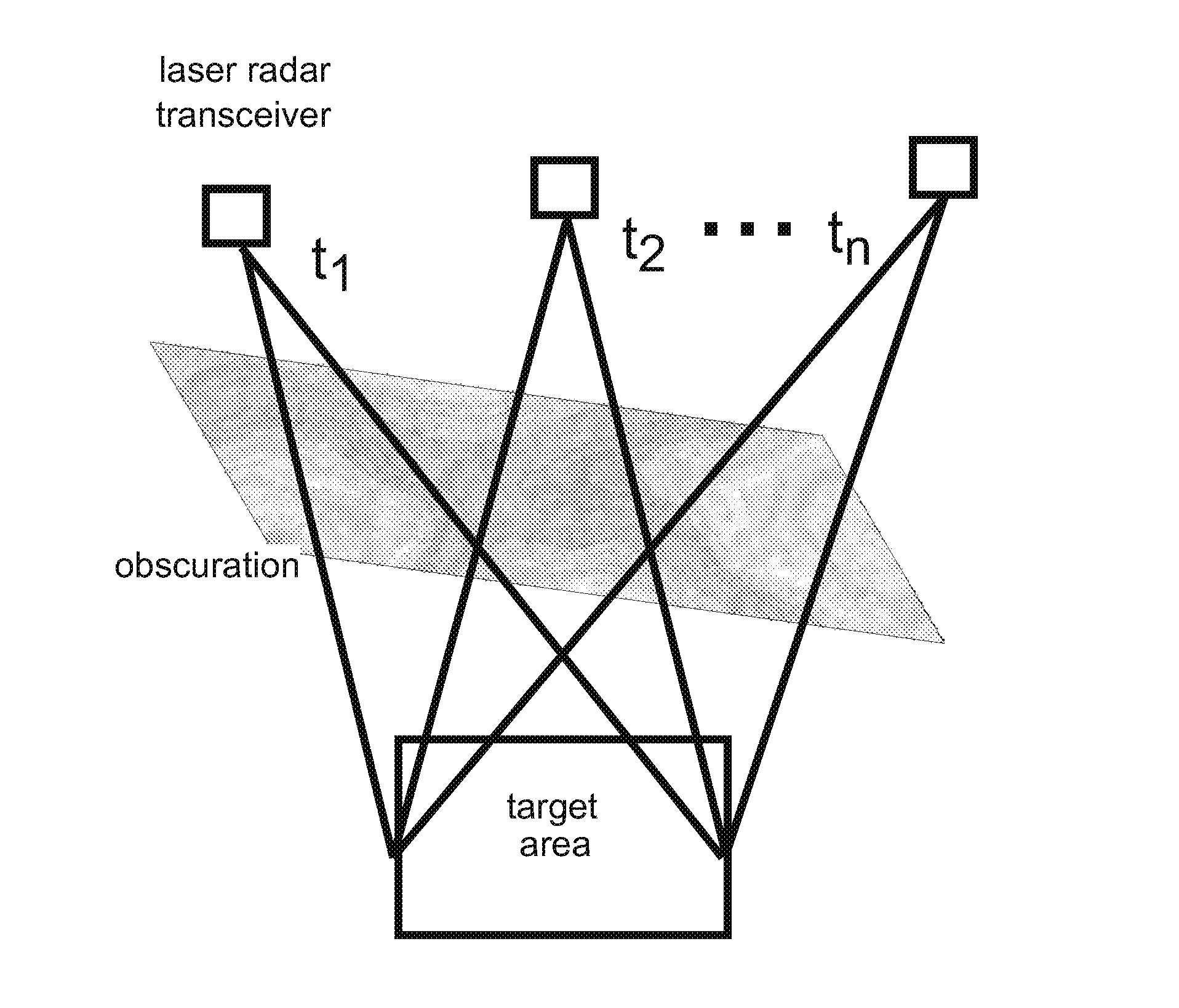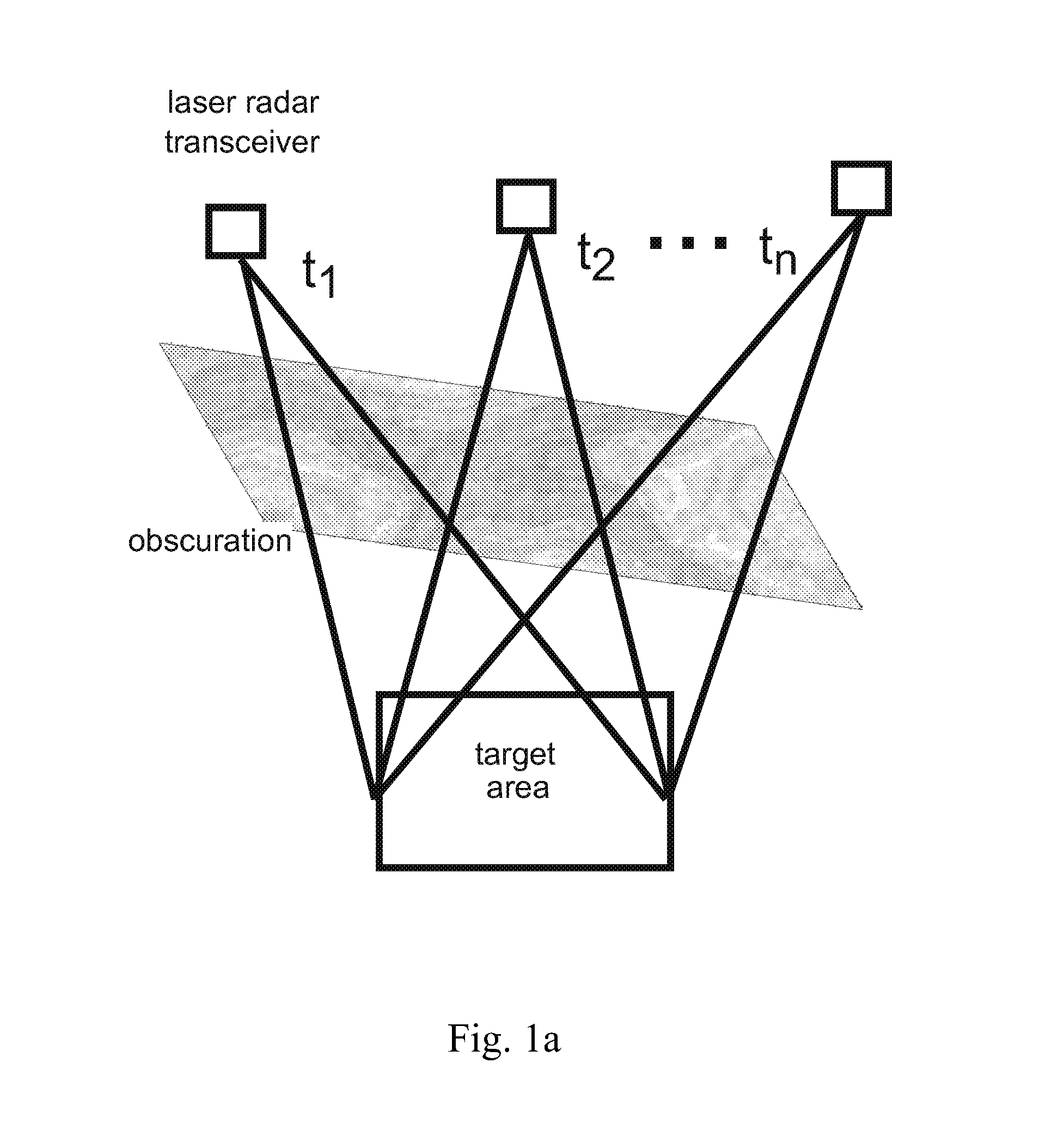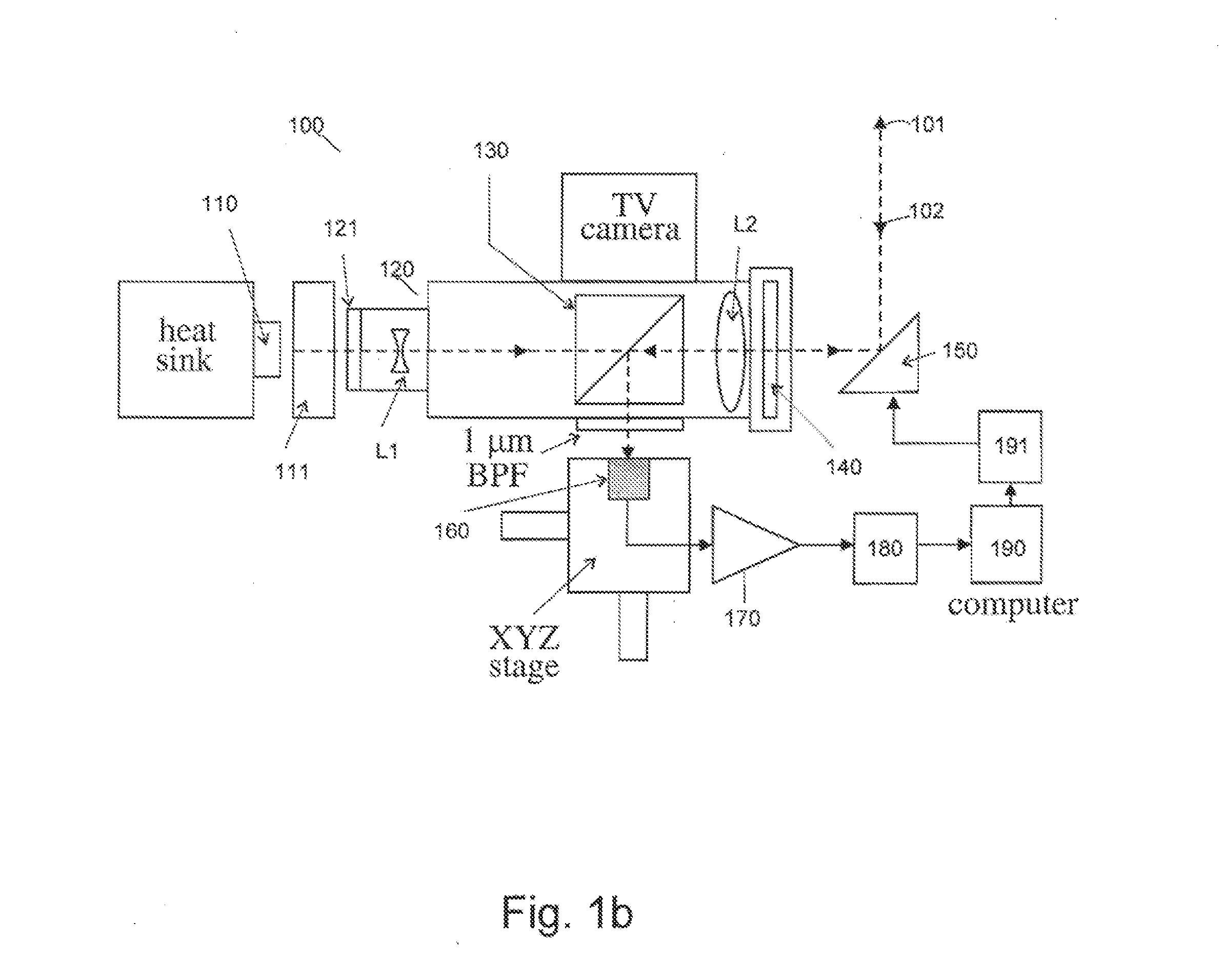Digital registration of 3D laser radar data based on manually selected fiducials
a technology of laser radar and data, applied in the direction of distance measurement, height/levelling measurement, instruments, etc., can solve the problems of difficult acquisition of precise and absolute positioning information, inability to meet the requirements of precise positioning, so as to improve the target identification capability, and improve the target identification of an obscured target
- Summary
- Abstract
- Description
- Claims
- Application Information
AI Technical Summary
Benefits of technology
Problems solved by technology
Method used
Image
Examples
Embodiment Construction
[0027]Laser Radar and 3D Data Collection
[0028]A short-pulsed, direct-detection, scanning laser radar is disclosed to record and process 3D data. Such a ladar system can be based on a single laser, single detector, common-aperture architecture. An exemplary ladar system (e.g., 100) employs a diode pumped, passively Q-switched, Nd:YAG, micro-chip laser (e.g., 110) capable of emitting short laser pulses (on the order of about ˜1.2 nanosecond) of high peak power (e.g., 5 kW). In one exemplary embodiment, two galvanometer-scanning mirrors (e.g., 150) direct the laser radiation (e.g., 101) to the area of interest, scanning the scene in a raster fashion. The laser radar return signals (e.g., 102)) are detected by a photodiode 160, e.g., an InGaAs avalanche photodiode, and then amplified, digitized and stored, e.g., in a computer 190 storage device. This data results in a regularly spaced 3D array representing the volume of interest, as shown in FIG. 2.
[0029]An exemplary embodiment is shown...
PUM
 Login to View More
Login to View More Abstract
Description
Claims
Application Information
 Login to View More
Login to View More - R&D
- Intellectual Property
- Life Sciences
- Materials
- Tech Scout
- Unparalleled Data Quality
- Higher Quality Content
- 60% Fewer Hallucinations
Browse by: Latest US Patents, China's latest patents, Technical Efficacy Thesaurus, Application Domain, Technology Topic, Popular Technical Reports.
© 2025 PatSnap. All rights reserved.Legal|Privacy policy|Modern Slavery Act Transparency Statement|Sitemap|About US| Contact US: help@patsnap.com



